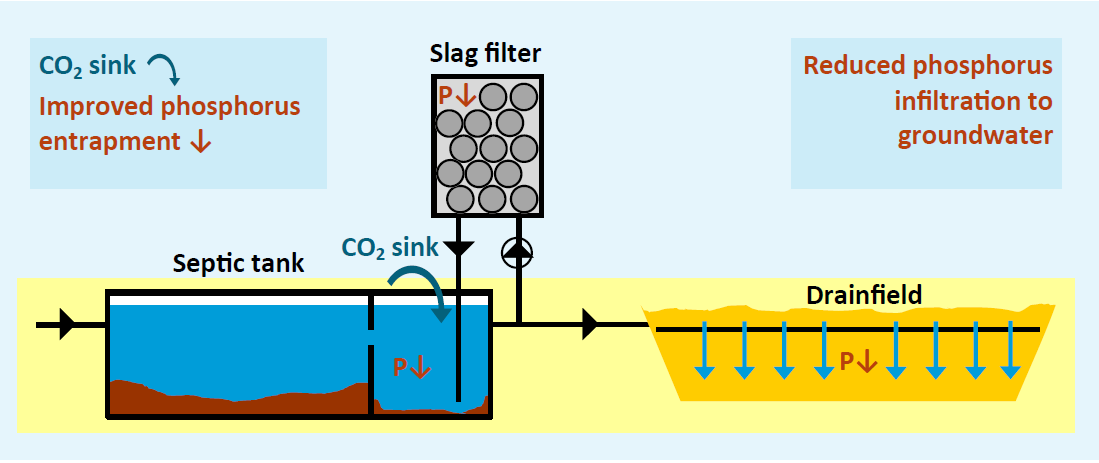The objective of this work was to evaluate the removal of phosphorus and carbon dioxide capture of a conventional septic system upgraded with a sidestream steel slag filter used in recirculation mode. A pilot scale sidestream experiment was conducted with two septic tank and drainfield systems, one with and one without a sidestream slag filter. The experimental system was fed with real domestic wastewater. Recirculation ratios of 25%, 50% and 75% were tested. Limestone soils and silica soils were used as drainfield media. The phosphorus removal efficiency observed in the second compartment of the septic tank was 30% in the slag filter upgraded system, compared to -3% in the control system. The drainfield of silica soils achieved very high phosphorus removal in both control and upgraded systems. In the drainfield of limestone soil, the slag filtration reduced the groundwater phosphorus contamination load by up to 75%. Phosphorus removal in the septic tank with a slag filter was attributed to either sorption on newly precipitated calcium carbonate or precipitation of vivianite, or both. Recirculation ratio design criteria were proposed based on simulations. Simulations showed that the steel slag filter partly inhibited biological production of carbon dioxide in the septic tank. The influent alkalinity strongly influenced the recirculation ratio needed to raise the pH in the septic tank. The control septic tank produced carbon dioxide, whereas the slag filter upgraded septic tank was a carbon dioxide sink.

